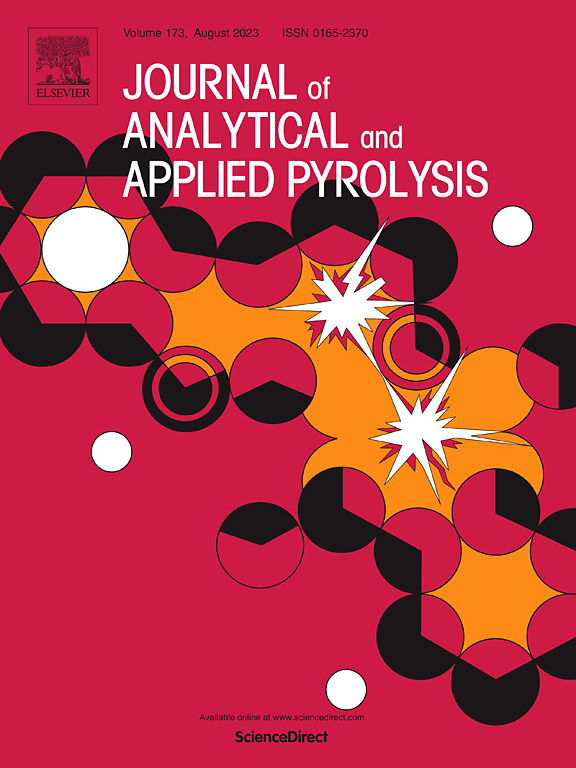Thermal behavior, kinetics, and gas evolution characteristics for the pyrolysis of unused and UV-aged GFRP
IF 5.8
2区 化学
Q1 CHEMISTRY, ANALYTICAL
引用次数: 0
Abstract
Glass fiber reinforced plastic (GFRP) materials are particularly susceptible to significant performance deterioration in environments with intense ultraviolet (UV) radiation, which increases the risk of ignition. However, the impact of UV exposure on the combustion characteristics of GFRP has not been revealed in the literature. Pyrolysis is the first step of combustion. This study utilizes TG-FTIR to examine the pyrolysis behaviors of both unused and UV-aged GFRP. The results indicate that the pyrolysis process for both unused and aged samples can be divided into two stages. A decrease in the activation energy of the initial pyrolysis stage was observed, with reductions of 18.8 % and 20.2 % after aging durations of 7 and 15 days, respectively. Furthermore, the pyrolysis process was accurately modeled using diffusional, power law, nucleation, and order-based reaction mechanism models. The components generated during the pyrolysis of unused and UV-aged GFRP included C-O, H2O, CO2, C-H, and C![]() O. Additionally, the thermal degradation process was reconstructed by a Convolutional Neural Network model, and the results demonstrated a strong correlation between the predicted data and the experimental data. The findings from the pyrolysis analyses suggest that UV aging significantly increases the ignition risk associated with GFRP.
O. Additionally, the thermal degradation process was reconstructed by a Convolutional Neural Network model, and the results demonstrated a strong correlation between the predicted data and the experimental data. The findings from the pyrolysis analyses suggest that UV aging significantly increases the ignition risk associated with GFRP.
求助全文
约1分钟内获得全文
求助全文
来源期刊
CiteScore
9.10
自引率
11.70%
发文量
340
审稿时长
44 days
期刊介绍:
The Journal of Analytical and Applied Pyrolysis (JAAP) is devoted to the publication of papers dealing with innovative applications of pyrolysis processes, the characterization of products related to pyrolysis reactions, and investigations of reaction mechanism. To be considered by JAAP, a manuscript should present significant progress in these topics. The novelty must be satisfactorily argued in the cover letter. A manuscript with a cover letter to the editor not addressing the novelty is likely to be rejected without review.

 求助内容:
求助内容: 应助结果提醒方式:
应助结果提醒方式:


